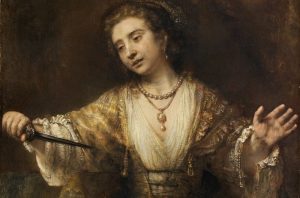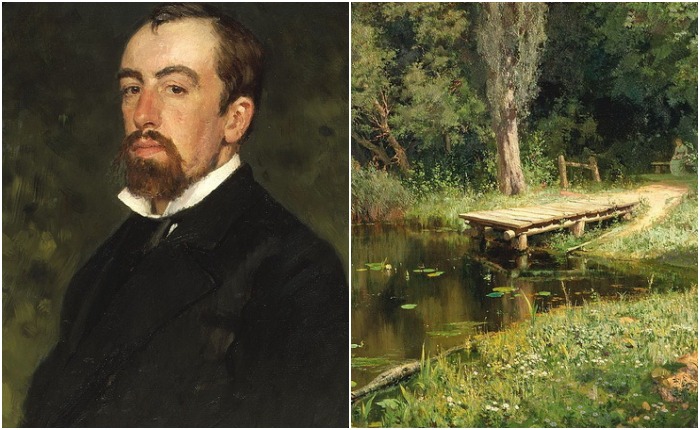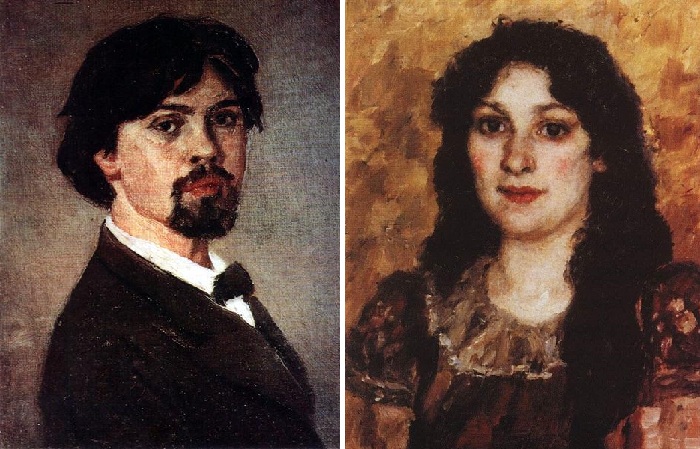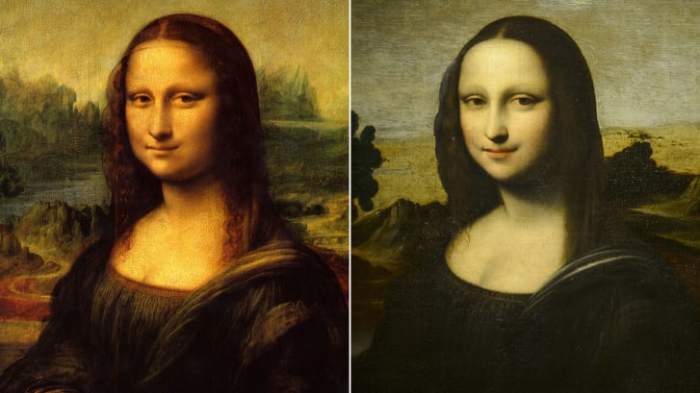The bloody drama that broke out centuries ago in Rembrandt’s brilliant painting Lucretius
 As a rule, artists in all ages, creating their paintings, meticulously approached the choice of subjects that would inspire them to write unique and masterpieces. And since in the old days, plots were taken from legends, myths, biblical stories, the same theme was revealed by painters in different variations and several times. And today I would like to recall one of such legendary stories that laid the foundation for the works of many eminent masters of European painting. This heart-rending plot did not pass by the famous Dutchman Rembrandt Harmenszoon Van Rijn.
As a rule, artists in all ages, creating their paintings, meticulously approached the choice of subjects that would inspire them to write unique and masterpieces. And since in the old days, plots were taken from legends, myths, biblical stories, the same theme was revealed by painters in different variations and several times. And today I would like to recall one of such legendary stories that laid the foundation for the works of many eminent masters of European painting. This heart-rending plot did not pass by the famous Dutchman Rembrandt Harmenszoon Van Rijn.
And the story, which occupied all the thoughts of the artist, was about the pious Roman Lucretia, the beloved heroine of the Renaissance and Baroque artists, who tragically passed away, but tried to save her honor.
In this amazing legend, eroticism and death are tightly intertwined. And the question naturally arises, why such stories were so popular in painting in those distant eras: youth, beauty, sex, nakedness, violence and death, and all this “in one bottle”? And to understand this, you need to plunge a little into the history of this ancient legend.
The legend of Lucretia
This story, implicated in a bloody drama, served as the reason for the overthrow of the Tarkvinis monarchy in 510. The main characters in it were represented: Sextus Tarquinius, the eldest son of the king; the virtuous Lucretius, wife of Collatin, a relative of the ruling dynasty, Collatin himself and his friend Brutus.
Once during the hostilities, the royal sons feasted with Collatin under the walls of the city besieged by them. And in a drunken stupor, as often happens, we were talking about wives, their fidelity and impeccability. Everyone began, as he could, to praise his own. Then Collatin suggested firsthand to verify the justice of the words of each, and all together go home to see what their spouses are doing at the moment.
The whole company jumped on horseback and a few hours later ended up in Rome. They found royal wives feasting with their friends. And when we went to the province where the house of Collatine was, then everyone saw that Lucretia (as befits a virtuous Roman matron) late at night was surrounded by maids and was spinning yarn. Thus, the argument was won by Collatin. However, the unhappy then would know what price he would pay for it …
The beauty and chastity of Lucretia instigated a criminal passion in the heart of Sextus Tarquinius, and after a while he secretly came to the house of Collatin. Lucretia welcomed the royal person, treated him to dinner and ordered him to prepare a bed for him at night. But, obsessed with passion, Tarquinius appeared in her bedroom and, threatening a dagger, raped a woman. By morning, an uninvited guest left her house, and Lucretia called her husband and father to her. And when they came out from under the besieged city together with their closest friends, the woman told what had happened, then grabbed a dagger hidden in the folds of clothes and stuck it in her heart.
The heartbroken men carried Lucretius’s bloodied body to the square and called on the citizens of the city to rebel against Tarquin. A crowd of people moved to Rome, and there was already an uprising, which the royal offspring could not strangle. He was forced to submit to the will of the people and live the rest of his life in exile with his family. The Romans, thus overthrowing the monarchy, established a republic, the first consul of which was Collatin, the husband of the deceased Lucretius. Not all evil goes unpunished … This is the moral of this legend.
The suicide of Lucretia in the paintings of Rembrandt
As mentioned above, artists could return several times to the same topic, interpreting it differently. So Rembrandt wrote his Lucretius twice. In the first version, written in 1664, the artist portrayed a secular woman who holds a dagger at her chest, only preparing to die.
But in the second version, which is distinguished by a deep psychological moment, Rembrandt with incredible laconicism portrayed the unfortunate Lucretia in the last minutes of her life. The painter did not want to show the cruel rape, like many other masters, but depicted the horror of the suicide provoked by him. He dressed his heroine in a white, free-cut tunic, wraped to the very neck and a bright cloak draped over his shoulders. There are no decorations on it, and nothing distracts the viewer from the blood stain that slowly spreads in the folds of snow-white linen. And before us is no longer just a woman, but a man who takes his own life. The artist paid special attention to writing the eyes of his heroine. Truly brilliant and indescribable in words. How much can be read in them … In the very expression on the face there is no theatrical suffering in the face of death, only a keen sense of the inevitable and the seriousness of the decision.
“Lucretia” was the last painting by the artist on an antique theme. It was in antiquity that Rembrandt often sought morality. And what is curious, as shown by an X-ray examination, initially the dagger’s tip was in the blood, and the tunic itself was more bloodied.




